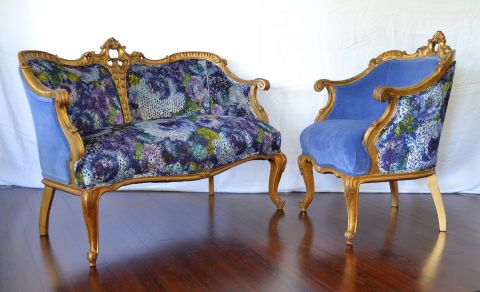Jaguar E-Type: A Timeless Icon of Automotive Design
2024-10-07 16:48:35
Few cars can claim the title of an automotive legend, but the Jaguar E-Type, also known as the Jaguar XK-E in the North American market, has earned this status with ease. Unveiled in 1961, the E-Type is celebrated not only for its breathtaking design but also for its advanced engineering and exceptional performance. This car encapsulates the spirit of the 1960s, a time of great cultural and technological upheaval, and remains a symbol of beauty and speed even today.

A Revolutionary Design
The Jaguar E-Types design was nothing short of revolutionary when it debuted at the Geneva Motor Show in March 1961. Its creator, Malcolm Sayer, who was an aerodynamicist rather than a traditional car designer, applied his expertise to create a car that was not only beautiful but also aerodynamically efficient. The E-Types long, sleek bonnet, its low-slung body, and the curvaceous, flowing lines made it instantly recognizable and undeniably elegant. Enzo Ferrari famously described it as the most beautiful car ever made, a testament to its aesthetic appeal.
The E-Types design was inspired by Jaguars D-Type race car, which won the 24 Hours of Le Mans three times from 1955 to 1957. The influence of the D-Type is evident in the E-Types monocoque construction, which combined a tubular framework with the body shell to create a lightweight yet strong structure. This design choice was innovative for its time and contributed significantly to the car's outstanding performance.
Performance Meets Style
Beneath the E-Types striking exterior was a car built for performance. The early models were equipped with a 3.8-liter inline-six engine, producing 265 horsepower. This engine was derived from the XK engine used in the Jaguar XK120, XK140, and XK150 models. It provided the E-Type with a top speed of 150 mph, making it one of the fastest production cars of its era. The E-Type could accelerate from 0 to 60 mph in under 7 seconds, a remarkable feat at the time.
In 1964, the engine was upgraded to a 4.2-liter version, which offered improved torque and drivability while maintaining the same power output. The 4.2-liter engine also introduced a new synchromesh gearbox, which made the car easier and more pleasant to drive.
Innovation and Engineering
The Jaguar E-Type was not just about looks and speed; it was also a showcase of advanced engineering. It featured independent rear suspension, which was uncommon in the early 1960s, giving it superior handling and ride quality compared to many of its contemporaries. The suspension setup was designed by Jaguars chief engineer, Bob Knight, and contributed to the E-Types reputation as a drivers car.
Another innovative feature was the cars braking system. The E-Type was equipped with disc brakes on all four wheels, a significant advancement at a time when many cars were still using drum brakes. This provided the car with exceptional stopping power, enhancing both safety and performance.
Variants and Evolution
The Jaguar E-Type was produced in three distinct series over its lifespan from 1961 to 1975, each bringing its own set of improvements and changes.
Series 1 (1961-1968)
The Series 1 is the original and perhaps the most iconic version of the E-Type. It featured covered headlamps, a small front grille, and signal lights above the bumpers. The early 3.8-liter models were soon followed by the 4.2-liter versions, which offered more torque and a better gearbox. In 1966, a 2+2 coupe was introduced, providing a longer wheelbase and rear seats, making the E-Type more practical for some buyers.
Series 2 (1968-1971)
The Series 2 introduced several design and mechanical changes. The most noticeable were the uncovered headlamps, larger front indicators, and a wrap-around rear bumper. These changes were largely driven by new safety and emission regulations, particularly in the U.S. market. The interior was also updated with more comfortable seats and a more ergonomic dashboard layout.
Series 3 (1971-1975)
The Series 3 saw the most significant changes to the E-Type, including the introduction of a new engine. The 4.2-liter inline-six was replaced by a 5.3-liter V12 engine, providing 272 horsepower and even smoother performance. This series also featured a longer wheelbase for all models, and the V12 engine necessitated a larger front grille for better cooling. The Series 3 was only available as a roadster or a 2+2 coupe, with the shorter-wheelbase coupe being discontinued.
The E-Types Legacy
The Jaguar E-Types impact on the automotive world is immeasurable. It has influenced countless sports cars and continues to be a benchmark for automotive design. Its combination of beauty, performance, and innovation set new standards for what a sports car could be. The E-Type was not just a car; it was a statement of style and engineering prowess.
Even today, the E-Type remains highly sought after by collectors and enthusiasts. Its value has appreciated significantly over the years, with well-maintained examples fetching high prices at auctions. The cars timeless design and the aura of 1960s glamour it embodies make it a favorite among those who appreciate classic automobiles.
The Jaguar E-Type stands as a testament to a time when automotive design and engineering reached new heights. Its perfect blend of form and function, its groundbreaking innovations, and its enduring legacy ensure that it will always be remembered as one of the greatest cars ever made. Whether admired in a museum, driven on a winding road, or showcased at a car show, the E-Type continues to captivate and inspire. It is not just a car; it is an icon of automotive history.












